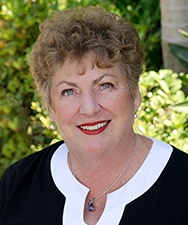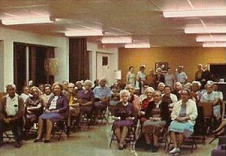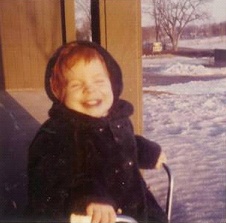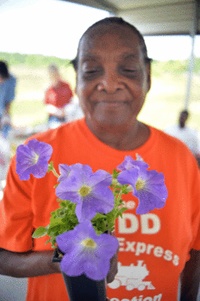Fifty years in housing: Part VI
 NMA founder and president Nan McKay is celebrating a major milestone this year: her 50th year in housing. In an ongoing series of posts, she'll be sharing her stories of how the industry has changed over the course of decades.
NMA founder and president Nan McKay is celebrating a major milestone this year: her 50th year in housing. In an ongoing series of posts, she'll be sharing her stories of how the industry has changed over the course of decades.
Nan has previously written for the NMA blog on the topic of executive management and high performance achievement in the HCV program, and was recently profiled in the latest installment of our interview series.
- Part I: Interesting tidbits from 1937 to 1963
- Part II: Urban renewal on Concord Street
- Part III: The most exciting New Year’s Eve
- Part IV: Integrating Concord Street into the new highrise
- Part V: The men of the building
- Part VI: The women of the building
- Part VII: Public housing in the 1960s and 1970s
- Part VIII: The advent of Section 8
The women of the building
I must also tell you about the women. There were many, and I can't tell you all the stories, but some still stick in my mind. Nellie (a very proper lady) and I used to chat about what used to be. Many people wanted to view the highrise, and she allowed us to show her apartment over and over. It was always neat as a pin. Clara was always busy — never sat down. The other Nelly loved to show her apartment off — it was on the ninth floor at the corner of the building and she could see the stockyards and Concord Street from a very high view.

Melveen always looked like a fashion plate — a beautiful woman. Barbara with her infectious laugh. Blanche was our oldest resident, in her 90s, and still went out with her beautiful white hair piled high on her head. My sweet, wonderful friends. Why, oh why, did I not keep a list of each apartment resident? I guess I never thought I would be this old (older than many of them were at the time) and would forget some of the names and the times. There are so many memories. The ghosts walk the halls of my mind.
There were a few couples besides Harry and his wife. Even the police chief's parents were in the highrise. They were often busy with family. They were among the lucky ones, as were others in the building who had families who visited. Some others had families, but they rarely visited. It broke my heart to see them standing at their windows, hoping and waiting for a son or daughter to visit.
We were a family. We loved to laugh. On April Fools' Day, Leo delighted in getting one over me. Like putting salt in the morning coffee pot. I got one on him, too, though. With his wife Lilly's help, I short-sheeted his bed. I think there was some strong language when he got in bed that night. Not exactly a professional manager today, I know, I know. Not how I'd teach the supervisory course today. I know.
Several people really missed their gardens, especially in the spring, when they'd used to plant vegetables and flowers. Leo came up with the idea of making a big garden plot in the back yard. I was a little hesitant about digging up the lawn, but thought, "Oh, what the heck," so we did.
They had so much fun with that garden. Nelly from the ninth floor planted tomatoes and every day, throughout the day, she would check on the tomatoes. Every day. No tomatoes yet. One night Leo sneaked out after bedtime (after 9 p.m.) and tied little cherry tomatoes on all of her plants. The screams from the garden the next morning were worth it all!
We arranged trips here, there, and everywhere. We chartered a school bus and went to plays, ballgames, and all kinds of other events. We lived. It didn't matter anymore if your hair was gray and you had wrinkles. You didn't feel old anymore!
While I worked in the highrise, I got pregnant. The social circle knit for me, and the women watched me like a hawk. They watched what I ate and what I did. Jim became a prince as a father-to-be. I got rounder and rounder, but I kept working. I remember the screams and admonishments from the community room when, at eight months pregnant, I jumped the hedge in my haste to get out to Leo on the lawn mower to tell him something.
Everyone had an opinion of what I should or should not name the baby. Jim and I decided on Molly, and Leo was aghast. "I had a horse named Molly. You can't name her Molly!"

At 5:30 p.m. on September 10, 1970, still at the highrise, I felt the first pain. Molly was born at 8:30 p.m. that day. I stayed home for two weeks and couldn't stand it any longer. Molly McKay with her little fluff of red hair came to work with me every day.
I nursed her on my breaks and at lunch. Lilly babysat for her, and there would be a parade of visitors all day to see "the little one." She had 132 grandmas and grandpas.
She learned to walk in the highrise, and would toddle through the halls. For many years later, we visited the highrise and, in the community room, she sat and talked individually with each person and held their hand.
As the years went on, sometimes it was hard. I found out that elderly people died — or, worse yet to them, had to go to a nursing home. Clyde would leave a pan on the stove with the burner on and forget about it. His legs just gave out and he had to sit in the living room, so he forgot about the stove, he said. We all knew it was just a matter of time, but the time for the nursing home always came too soon. The siren would come close to the building, and we'd all look out the window and dread to see who it would be this time.
Enough about those days, but I think not funding elderly public housing since 1980 is a shame. It was the best program they had.
Next: Part VII: Public housing in the 1960s and 1970s
While serving as executive director of a Minnesota housing authority, Nan McKay started one of the nation’s first Section 8 programs. She has devoted the past two years to redesigning NMA’s HCV Executive Management course and rewriting the HCV Executive Management Master Book.


